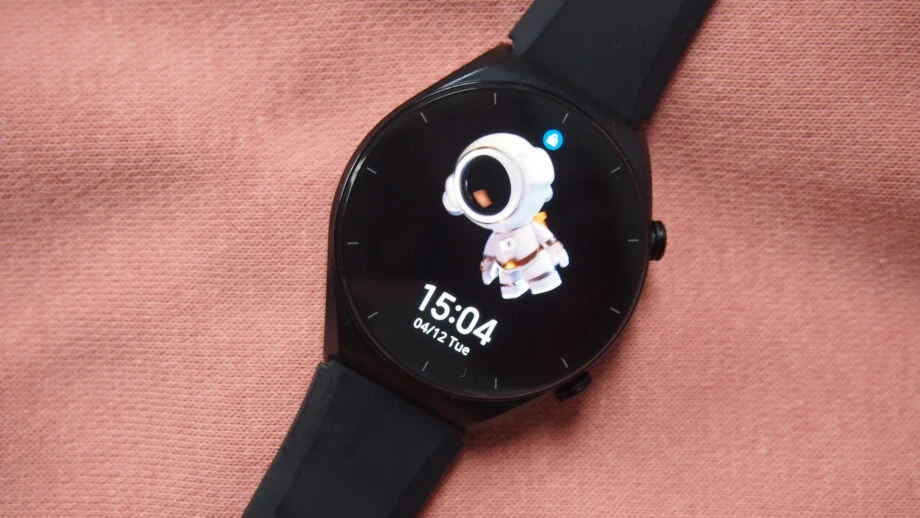The Huawei Watch GT 3 is the perfect successor to the GT 2 in many ways. Its design with more fashion makes it an ideal accessory outside the gym, while the detailed fitness tracking software ensures that it hasn’t forgotten its key audience. On the other side, the Watch S1 brings Xiaomi closer to its efforts to create a smartwatch that you would actually want to wear. For those looking for a smartwatch that offers a decent hardware and software experience, the Watch S1 fits the bill.
In this article, we’ll walk you through all the features of these two smartwatches to help you make the right choice.
Huawei Watch GT 3 vs Xiaomi Watch S1 price and availability
| HUAWEI Watch GT 3 (42mm) GPS + Bluetooth Smartwatch (Light Gold) – International Version | Xiaomi Watch S1 | |
|---|---|---|
 | $189.99 | $169.99 |


Both smartwatches are currently available. The Huawei Watch GT 3 is sold new for an average price ranging from €187 to €249 and the Xiaomi Watch S1 will cost you between €184 and €269.
Design and display of the Huawei Watch GT 3 vs Xiaomi Watch S1


The Huawei Watch GT 3 is nothing like the Watch GT 2. The latter was designed for the gym and outdoor activities. In comparison, the GT 3 looks more like a fashion watch than anything else and that’s not necessarily a bad thing.
Instead of two stopwatch buttons, you now have a rotating crown at the top right that acts as a home button and a way to scroll through menus, and a push button that sits almost flush with the frame and can be used to start tracking a workout in seconds.
Even the straps that come with the watch have largely moved away from the fitness-first approach. No matter which GT3 version you choose, you’ll still have an absolutely gorgeous AMOLED display that holds up very well in everyday use.


In terms of appearance, the Watch S1 seems to be a step up from Xiaomi’s earlier Mi Watches, adding high-quality materials to make it a more stylish addition to your wrist.
With a round design and 46mm case, it has a stainless steel frame and weighs 52 grams. It’s also water resistant to 50 meters. You get a leather strap and a fluorinated rubber strap, which means you have the option to make the watch more stylish if needed.
The case holds in place a 1.43-inch AMOLED touchscreen display, which offers a pixel density of 326 ppi; you can set the screen to stay on 24/7. It’s covered in sapphire crystal to offer a little more protection from scratches, which is good to see on a watch at this price.
Aside from touchscreen navigation, you have two physical buttons on the right side of the case, with which you can turn on the screen and access features like workout tracking more quickly. There’s nothing particularly eye-catching about these design elements, but the buttons, in particular, have a clear and pleasing actuation point.
Huawei Watch GT 3 vs Xiaomi Watch S1 features and performance


The HarmonyOS user interface is clean and easy to navigate, not too dissimilar to the Apple Watch’s app tray. There are stress tests to keep tabs on how you’re doing throughout the day, as well as a breathing app for brief moments of mediation.
Huawei TruSleep makes its return here providing detailed sleep tracking reports each morning via the Huawei Health app, TruSleep provides written feedback in addition to the usual data-driven statistics so you have a better understanding of how you can improve your circadian rhythm.
The new “Route Back” feature will also guide you back to the start of your trip if you’re not sure how to get home once your run or hike is over. Elsewhere, a firm push of the button brings up Huawei’s smart assistant Celia.
Celia isn’t as fast as its competitors either, but what’s worse is that the smart assistant doesn’t work at all on the watch unless you have a connected Huawei smartphone which is only part of a larger problem.


Xiaomi’s Watch S1 is an option for both Android and iOS users. Setup is done via the new Mi Fitness app, which has seen Xiaomi clean up its companion app. Once installed, you’ll find this watch fairly easy to pick up. Xiaomi isn’t reinventing the wheel in terms of the software experience on the watch, and in general, it’s a smooth performance.
Xiaomi also offers integration with Amazon’s Alexa smart assistant, which is making an appearance on watches from Amazfit, Fitbit and Google’s Wear OS devices, too. The surprise addition here, however, is NFC payments, which Xiaomi first included on a version of its Mi Band 6 fitness tracker.
In general, this collection of features works well. While the notification support isn’t the richest you’ll find, the notifications were at least easy to read and gave me enough information to know if I should respond immediately or if I could wait. Calling via Bluetooth works well and music controls are well implemented. You get a decent mix of watch faces, too, with the ability to download more from the Mi Fitness app.
Which one has the best health tracking?


The Huawei GT3 has a handy recovery timer that lets you know when you’re ready to embark on a new workout. It’s not nearly as detailed as what you’ll find on the Whoop Strap 4.0, but it at least emphasizes the importance of rest when it comes to achieving optimal performance during your workouts.
Previous Huawei watches used a “ring” format to present an overview of your daily performance, and while that format is still making a comeback, there’s a secondary account that takes a more specific approach to your health and wellness, titled “Healthy Living.”
The GT 3’s heart rate monitor also does a great job of tracking your fitness, with results fairly comparable to a dedicated chest belt monitor (the Myzone MZ-Switch in this case). In most cases, the maximum heart rate was accurate with the MZ-Switch, while the average rate had a slight variance of about 1-3BPM.


The Xiaomi Watch S1 doesn’t look like it’s exercise-friendly until you put on the extra fluorinated rubber strap provided. However, it is a device that can track steps, monitor heart rate 24/7, and promises to accurately track any outdoor workout.
In terms of sensors, there are accelerometer and gyroscope motion sensors to track indoor activity and steps, for example. There are also magnetic and air pressure sensors to provide additional environmental data. Xiaomi includes a PPG heart rate sensor, which measures oxygen in the blood.
For outdoor tracking, the Watch S1 supports GPS, Glonass, Galileo, BDS and QZSS satellite systems, and you also get a dual-band multi-system GPS. The latter means that the watch is able to pick up multiple signals from these systems to provide, in theory, a more accurate location.
The Watch S1 does better with blood oxygen statistics, but the lack of context for this data means the feature hasn’t proven extremely useful. Xiaomi uses the on-board heart rate sensor to offer stress tracking features, tracking periods of stress throughout your day.
Which smartwatch has the best battery life?


Depending on which variant of the Watch GT 3 you buy, your battery life experience may be considerably different. Huawei has confirmed 14 days of battery life for the 46mm model and seven days for the 42mm version.
The battery life of the 46mm version is nothing short of remarkable; TechRadar’s sister site T3.com tested the larger model and only had to charge it twice in the span of two weeks.
The Xiaomi Watch S1 is equipped with a 470mAh battery, which, according to Xiaomi, can last up to 12 days in “standard” mode. There is also a “Battery Saver” mode, which limits the features you have access to, but offers a battery life of 24 days.
| HUAWEI Watch GT 3 (42mm) GPS + Bluetooth Smartwatch (Light Gold) – International Version | Xiaomi Watch S1 | |
|---|---|---|
   | $189.99 | $169.99 |


So the Watch S1 can get you through nearly two weeks without charging, but to do that you’ll have to give up advanced sleep monitoring, permanently adjusting the screen, and using GPS.
For charging, the disc-shaped charging cradle on the back of the Watch S1 keeps the device reasonably secure. You also have the option of wireless charging, dropping the watch onto a certified wireless charger to power it without having to search for the cable in the box.
Also check out :
